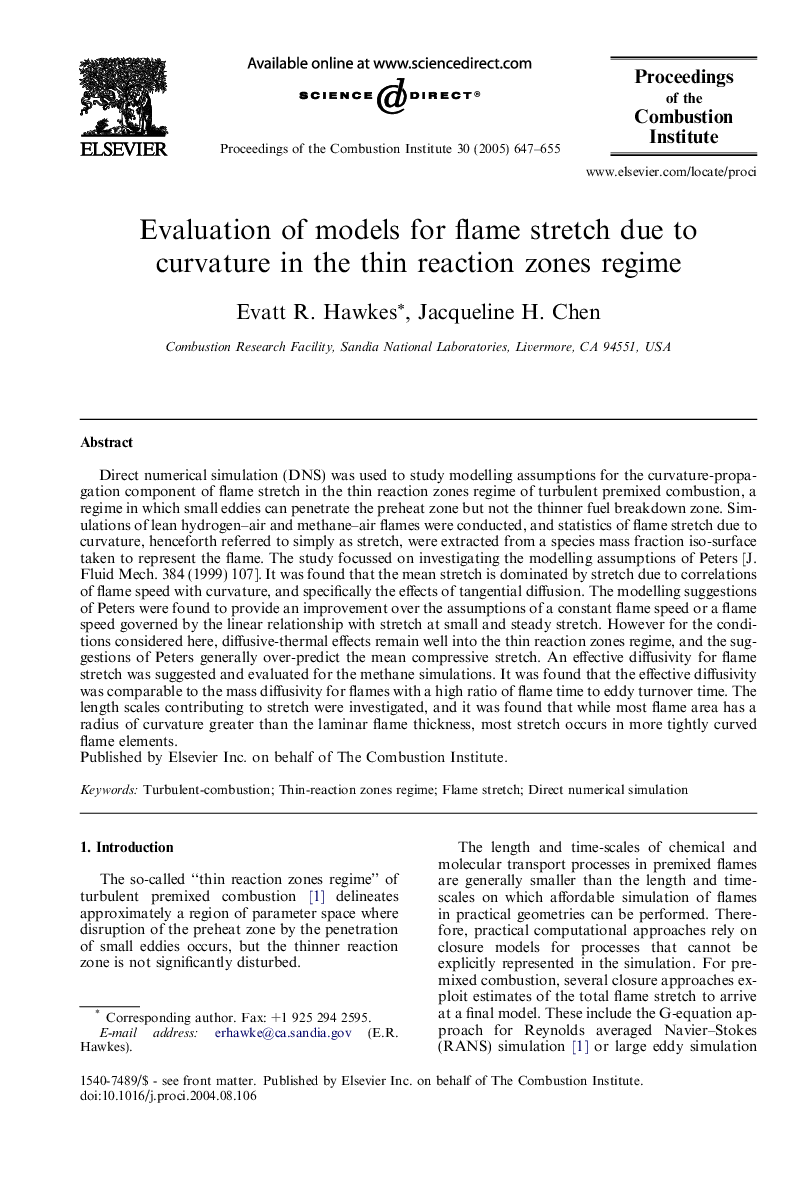| Article ID | Journal | Published Year | Pages | File Type |
|---|---|---|---|---|
| 9637387 | Proceedings of the Combustion Institute | 2005 | 9 Pages |
Abstract
Direct numerical simulation (DNS) was used to study modelling assumptions for the curvature-propagation component of flame stretch in the thin reaction zones regime of turbulent premixed combustion, a regime in which small eddies can penetrate the preheat zone but not the thinner fuel breakdown zone. Simulations of lean hydrogen-air and methane-air flames were conducted, and statistics of flame stretch due to curvature, henceforth referred to simply as stretch, were extracted from a species mass fraction iso-surface taken to represent the flame. The study focussed on investigating the modelling assumptions of Peters [J. Fluid Mech. 384 (1999) 107]. It was found that the mean stretch is dominated by stretch due to correlations of flame speed with curvature, and specifically the effects of tangential diffusion. The modelling suggestions of Peters were found to provide an improvement over the assumptions of a constant flame speed or a flame speed governed by the linear relationship with stretch at small and steady stretch. However for the conditions considered here, diffusive-thermal effects remain well into the thin reaction zones regime, and the suggestions of Peters generally over-predict the mean compressive stretch. An effective diffusivity for flame stretch was suggested and evaluated for the methane simulations. It was found that the effective diffusivity was comparable to the mass diffusivity for flames with a high ratio of flame time to eddy turnover time. The length scales contributing to stretch were investigated, and it was found that while most flame area has a radius of curvature greater than the laminar flame thickness, most stretch occurs in more tightly curved flame elements.
Related Topics
Physical Sciences and Engineering
Chemical Engineering
Chemical Engineering (General)
Authors
Evatt R. Hawkes, Jacqueline H. Chen,
